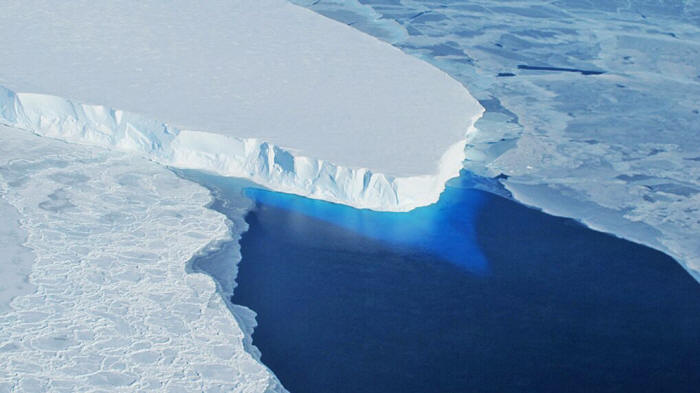|

by H. Sterling Burnett
March 05, 2024
from
ClimateRealism Website

NASA, Public
domain
via
Wikimedia Commons
A
CNN story implies that supposed
human caused climate change is causing the
Thwaites Glacier to melt, causing
sea level rise.
This is false...!
Data show that
Antarctica has not been warming...
Also, the study CNN cited, itself shows the
glacier has declined dramatically and recovered repeatedly in the
past, all without human contribution, suggesting the present decline
is part of a natural cycle.
At approximately the size of Florida, the Thwaites glacier is the
broadest glacier on Earth.
The Thwaites glacier is often referred to as the
"Doomsday Glacier," based on the belief that a complete collapse
would cause as much as two feet of sea level rise over time.
The CNN story, "The
'Doomsday Glacier' is rapidly melting - Scientists now have evidence
for when it started and why," discusses a new study
published in the journal Proceedings of the National Academy of
Sciences, which determined when the present decline began.
"By analyzing marine sediment cores extracted
from beneath the ocean floor, researchers found the glacier
began to significantly retreat in the 1940s, likely kicked off
by a very strong El Niño event - a natural climate fluctuation
which tends to have a warming impact," reports CNN.
"Since then, the glacier has been unable to
recover, which may reflect the increasing impact of human-caused
global warming, according to the report."
Although the timing of commencement of Thwaites
decline may now have been determined, any prognostications about
future trends for the glacier are pure speculation, unsupported by
historical evidence or data about present Antarctic trends.
The underlying reports determined that the Thwaites glacier's
decline commenced in the 1940s probably prompted by a powerful
El Niño event which warmed the
abutting waters.
Even CNN allows that El Niño's are,
"a natural climate fluctuation which tends to
have a warming impact."
Indeed, recent years when global average
temperatures have spiked have almost all coincided with El Niño
events.
To be clear,
from the 1940s through the 1970s global
average temperatures were cooling, and CO2
concentrations were significantly lower, although beginning to
increase..
What's true for the globe as a whole, however, is
not true for West Antarctica, where the Thwaites Glacier is located.
Research from 2023 shows that
temperatures there have fallen nearly two degrees
Celsius over the past two decades, at least...
Other research discussed at
Climate Realism suggests that whatever impact the Twaits
Glacier's decline is having on sea level rise,
is being mitigated by an increase in
snow and ice elsewhere on the continent.
Further evidence suggesting that anthropogenic
climate change (aka
Global Warming) has nothing to do
with the Thwaites Glacier's recent melting trend is found in the
study as well.
Indeed, the study determined that,
the Thwaites Glacier has retreated and
expanded multiple times over the millennia...
As CNN writes, the researchers involved found
that,
"similar retreats have happened much further
back in the past, the ice sheet recovered and regrew... [with]
James Smith, a marine geologist at the British Antarctic
Survey and a study co-author, [telling CNN],
'Once an ice sheet retreat is set in
motion it can continue for decades, even if what started it
gets no worse'."
The researchers and CNN bemoan the fact that,
the Thwaites glacier's decline is not
reversing, but they themselves admit that such declines in gone
on for decades in the ancient past, with no help from humans...
And, the precipitating event, a strong El Niño,
has been repeated multiple times since the
1940s, including this year, which would tend to keep
conditions for melting in place...
In short,
the idea that
human carbon dioxide emissions
are contributing to the Thwaites Glacier's decline is pure
speculation, speculation seemingly refuted by the significant
decline in surface temperature where the glacier resides, and
the net gain of ice and snow on Antarctica...
The Thwaites Glacier is bucking climate trends in
West Antarctica and for the continent as a whole, almost surely
because of El Niño warmed waters.
Climate change is not causing the Thwaites Glacier's decline.
Even still it would be prudent to plan for higher
sea levels, regardless of trends for the Thwaites Glacier, because
they are rising, although
not at a historically rapid rate.
Seas always rise between ice ages,
and history suggests that they will continue to rise, with fits and
starts, until the next ice age commences...
|


